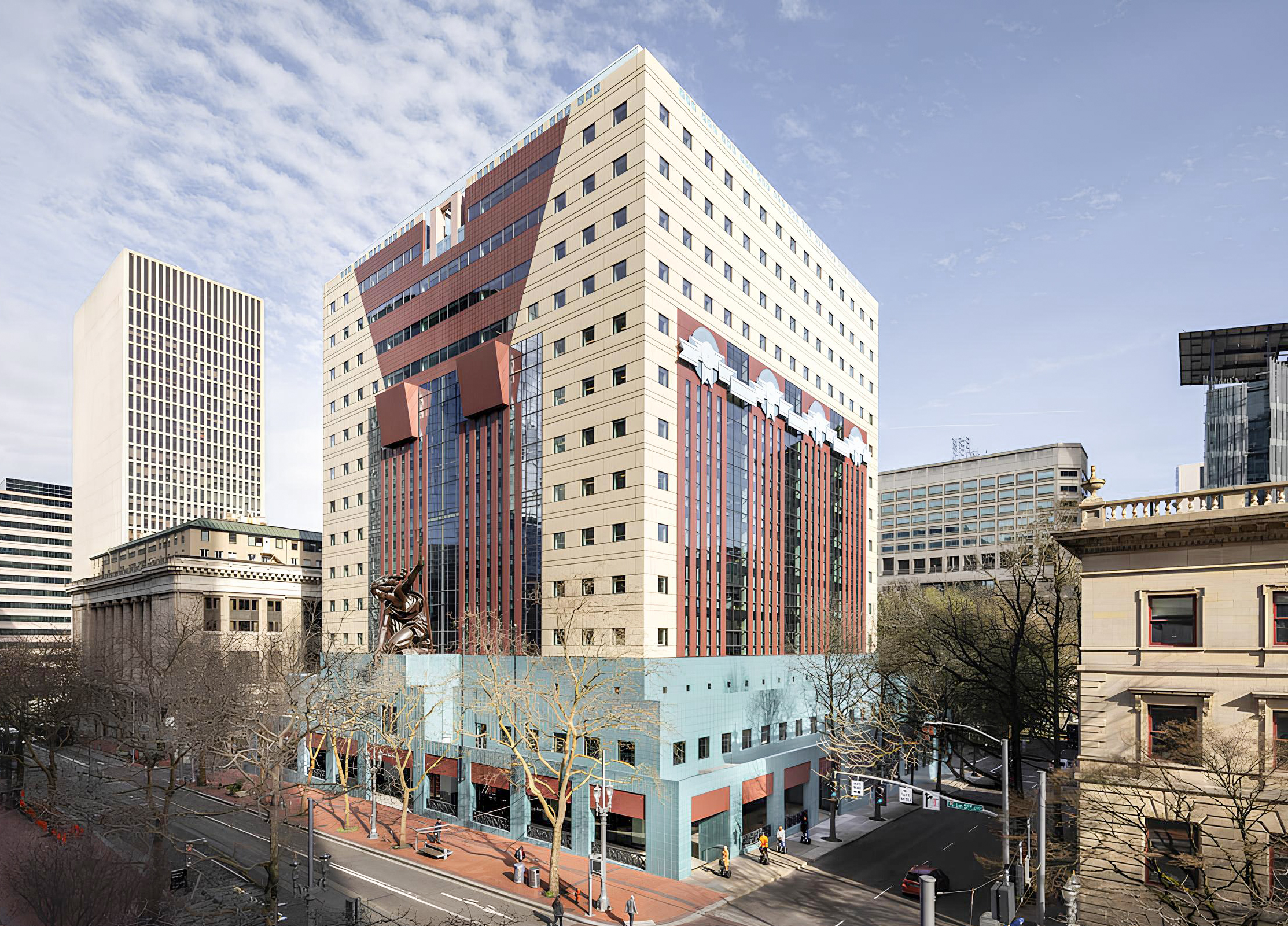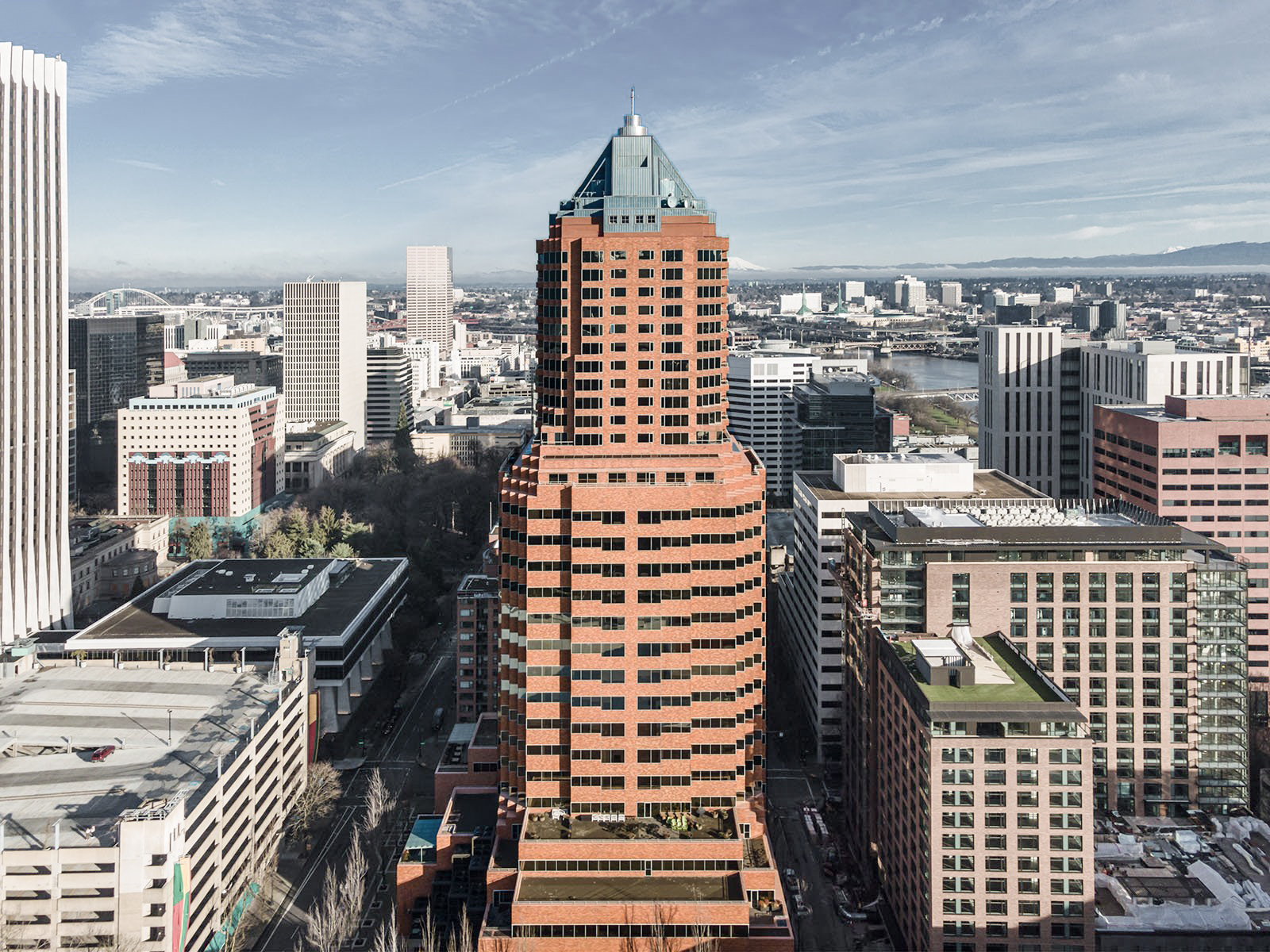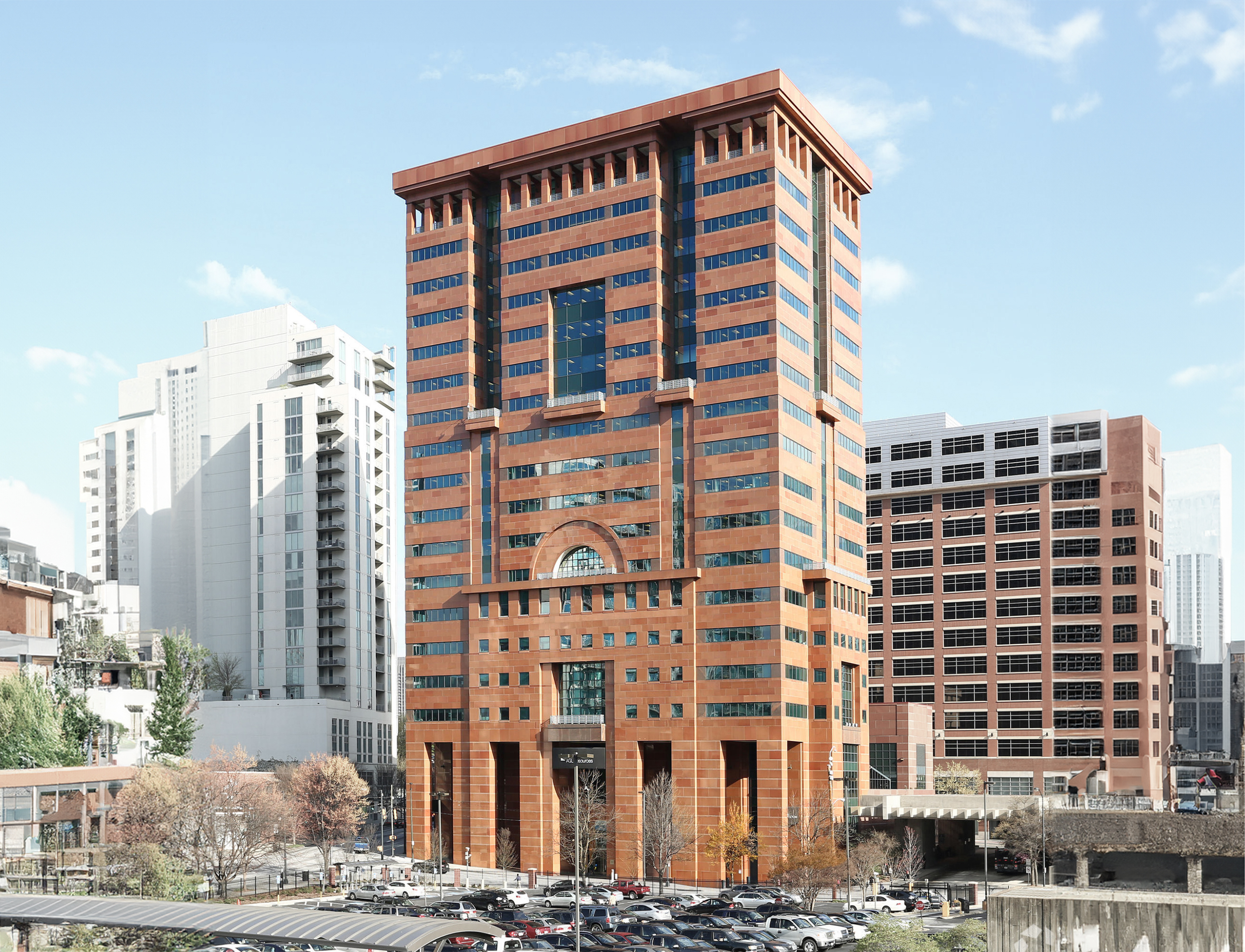The Portland Building is a Postmodernist skyscraper designed in 1979 by Michael Graves, in association with Emery Roth & Sons, and built between 1980 and 1982, for a reported $28.9 million dollars, in Portland, OR.
Portland Building is not the only name you might know this building by though. The building is, or has also been known as Portland Public Service Building.
Its precise street address is 1120 SW 5th Avenue, Portland, OR. You can also find it on the map here.
The Portland Building is a structure of significant importance both for the city of Portland and the United States as a nation. The building embodies the distinctive characteristic features of the time in which it was built and the Postmodernism style. Because of that, the Portland Building was officially included in the National Register of Historic Places on October 25th 2011.
The Portland Building has received multiple architecture awards for its architectural design since 1982. The following is a list of such prizes and awards:
- National AIA Honor Award in 1983
- Henry Hering Memorial Medal in 1986
The building underwent a major restoration between 2017 and 2020. The architect commissioned to undertake this restoration was DLR Group.




